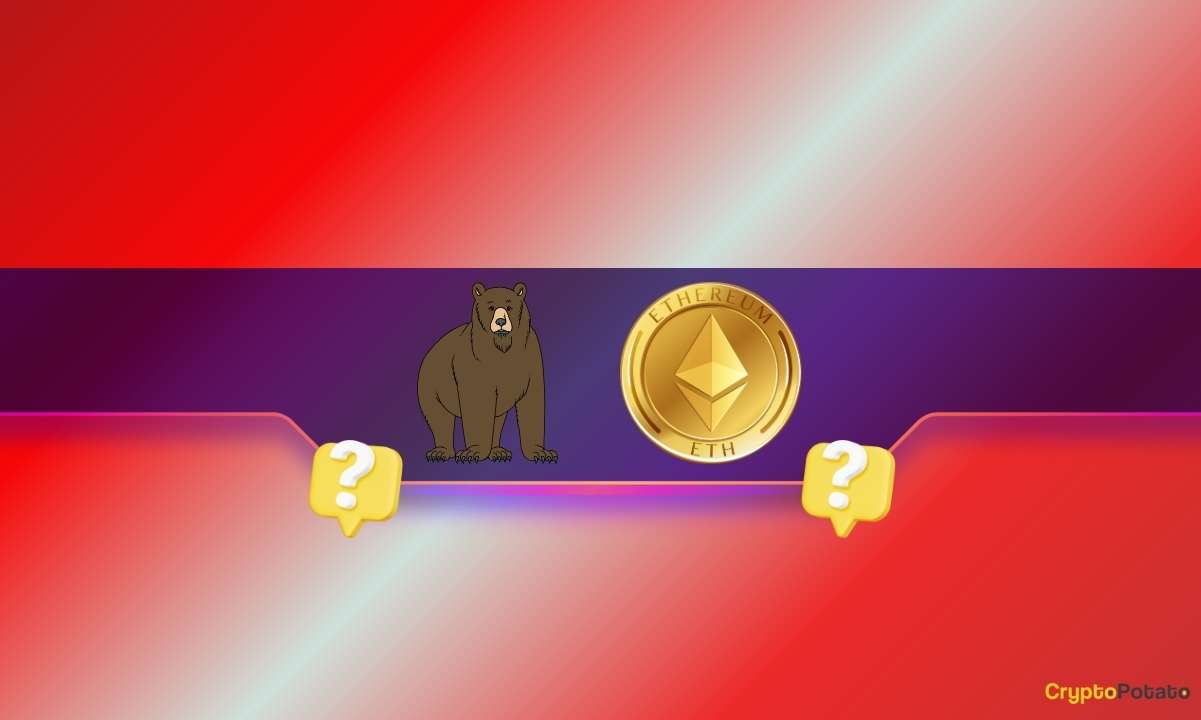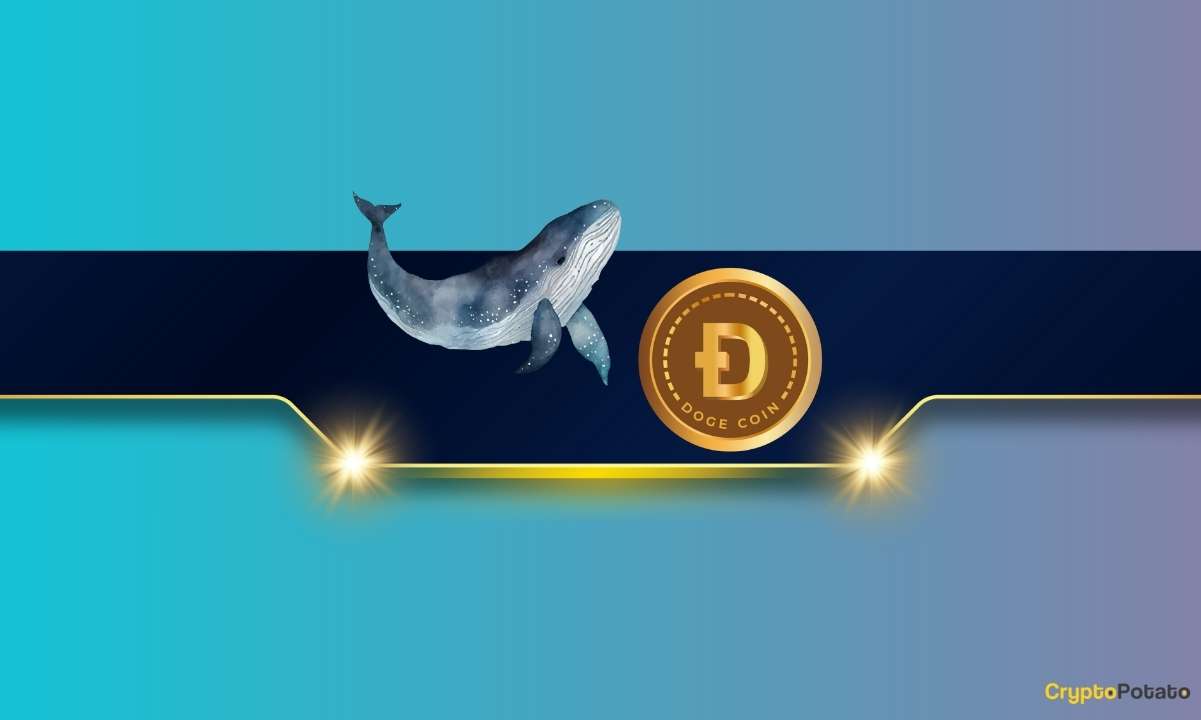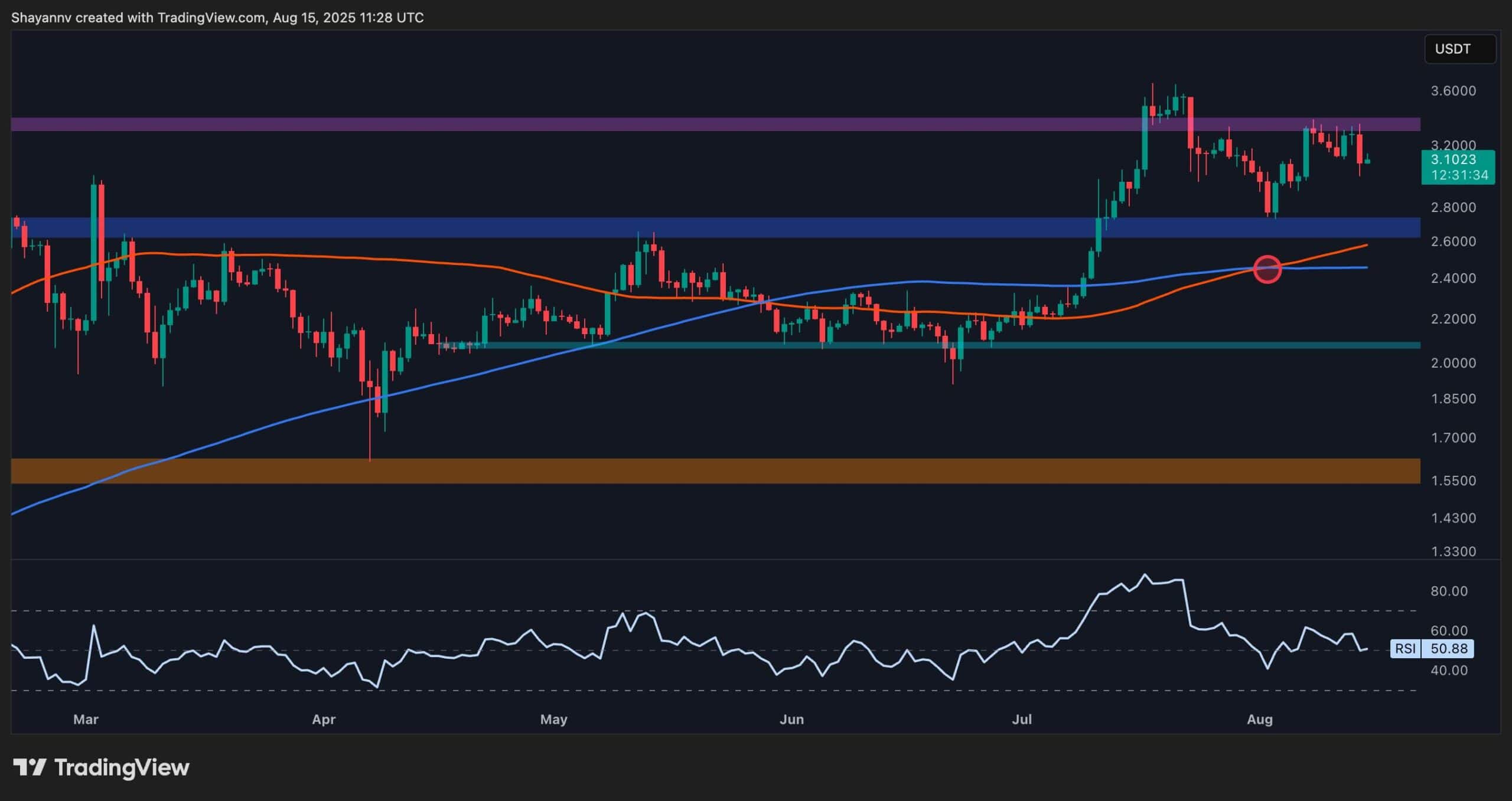Cryptocurrency
Forget about price! Polkadot Decoded 2023 says bear markets are for building

The Polkadot Decoded 2023 conference just wrapped up and this year more than 100 speakers and 100 blockchain projects were in attendance.
The beauty of crypto bear markets is they catalyze a realignment of perspectives and objectives.
All the hidden leverage is gone and most of the speculation is gone.
SBF is gone.
Do Kwon is gone.
Three Arrows Capital, Su Zhu, Kyle Davies and a handful of other hucksters and snake oil salesmen have been exiled.
And good riddance to all of them. Crypto doesn’t need hopium, messiahs, populists and dream peddlers. What we need are builders, fresh ideas, solutions that have product-to-market fit and some sort of realistic real world application.
That’s what I like about blockchain conferences. Especially during a bear market.
The buidl first mentality is the whole vibe of Polkadot Decoded. For the past two days, a tightly knit community of ecosystem siblings composed of developers, investors, ambassadors and a few curious journalists such as myself rendezvoused at the Øksnehallen conference center which is tucked away from the bustling, cobblestoned streets of central Copenhagen, Denmark.

The location is almost poetic given that it is a surprisingly quiet spot that is discreetly nestled within a thriving city center, and that ethos carried on through the conference events where the focus has been:
- Creating better interoperability between the projects in the Polkadot ecosystem;
- Making the blockchain more welcoming to builders; and
- Refining the cross-chain bridges that connect Polkadot to Ethereum, Cosmos and other blockchains.
Hardly anyone is talking about airdrops, token prices, memecoins, Bitcoin (BTC) hitting a new all-time high or any of the general conversational fodder that forms the bulk of most crypto discussions.
It’s bigger than a dollar sign
Rather than price, panellists discussed the challenges and occasional successes of helping TradFi and Web2 companies transition into Web3, the steps being taken to make the VC funding of projects more transparent, and the need for all the crypto jargon and rigamarole to be placed on the backend of DApps and the frontend UX to be more seamless.
Many folks even suggested that “blockchain,” “crypto,” and “Web3” should not be mentioned on projects’ websites, apps, roadmaps and so on.
According to Public Pressure CEO Giulia Maresca:
“I think it’s not about talking about the technology because mass adoptees don’t know how the phone or Google maps or any technology is working. We need to create products that are really easy for the user, but given the benefit that they are built on Web3 tech. It should be really easy for the user; it shouldn’t be complicated. We shouldn’t talk about wallets, or bridging or doing complicated crypto things. People get scared the minute you start talking about wallets. It should be as easy as using Instagram.”
Speaking of Web3 and the need for crypto to have a better product-to-market fit and connection to real-world assets, I moderated the opening panel at Polkadot Decoded, which focused on on-chain entertainment within music and film. It was an intriguing conversation, given that the general consensus among creators and builders is that music and film will be the most sticky when it comes to user growth, retention and mass application of NFTs within everyday life.

During the panel, Maresca explained why she believes that there is a natural synergy between creative industries and Web3 ideology:
“Web3 is a very socratic and creative space, and that aligns with the workflow and ideas of artists and creators.”
Maresca also firmly believes that phygital NFTs and experiences will gain a firm foothold in the areas of fashion design, the film industry and all aspects of the music industry.
Providing a real-world example of how fashion labels like Diesel were making entry to the Web3 space, Maresca explained:
“Diesel would like to be more into Web3, so we’ve helped them to build a really strong concept using music at the center of their strategy, so Diesel acting like a discovery label, discovering emerging and breakthrough artists to give voice to their art. And they’ve done a few drops with us already which were really successful, but we’re planning a big drop at the beginning of September that is going to be a phygital drop. So, I think now a big part of the future is phygital; it is giving experience, utilities, what the community wants, which is to have a VIP experience. They want something from the brand, not only the garments. They want to be part of the Diesel family. It’s a long process and lots of education to the C-level, but there are a lot of opportunities for brands to work with the music community, to fans, and to new fans.”
Ed Hill, senior vice president of media services at Beatport, emphasised that rather than being a mere buzzword, Web3 needs to become a tangible and actionable ideology within the corporate structure of the entertainment industry.
When asked about the disconnect between consumer desires, creators’ objectives and the products and experiences currently provided by the entertainment industry, Hill said:
“That’s a tough one to crack, but we have to go deeper and build better communities. If you look at YouTube and Facebook, those platforms are audience builders, and all anyone has cared about is views, and reach, and impressions and things like that. We have to go deeper into community building, and failure to do that is why younger audiences have been splitting away from traditional Web2 social media platforms, and I think, in time, if we build better, authentic communities from the ground up, that space between the corporate to creator to consumer gap begins to tighten.”
Related: New Web3 ID app lets users find each other based on proven interests
Community members are stakeholders, not just consumers
From my vantage point, and that of most conference attendees, crypto is about community, and the most viable projects tend to have a very grassroots approach where community members are stakeholders and their desires factor into the direction of the project. Historically, every time the crypto sector strays from this ethos and falls victim to the whimsy of money chasers and demagogues, investors and community members are essentially robbed of their agency within the project.
In order for corporations to transition into Web3 in an authentic way that bears fruit, creators, consumers and community members have to be viewed as more than a simple proletariat within a system purely focused on spinning up revenue and co-opting culture and turning creator IP into corporate marketing trinkets. Crypto media should take note too, but I digress.
Similar sentiments, which culminated with an optimistic take on the future of Web3, were expressed by Define Creative founder Finn Martin, who said:
“What gets me excited about Web3 is it offers all the tools and solutions to actually fix the problems that traditional Web2 has. By moving the assets on a chain, you can make it transparent for creators, you can give them direct revenue because, currently, the streaming model is broken. As a music creator, you own a fraction of a cent from each stream, and all of that can be addressed and solved via Web3.”
Blockchains should stop aspiring to be a jack of all trades

Generally, vast blockchain ecosystems tend to have a disjointed feel where a multiplicity of objectives and philosophies have investors and advocates feeling lost at sea. These projects tend to struggle with clearly defining their purpose, and this has a knock-on effect of impacting market fit efficacy.
They basically still struggle with the age-old crypto problem, which entails creating solutions for problems that aren’t actually problems for normal people. What stands out most to me at Polkadot Decoded 2023 is a unified goal of making the chain easier to use for builders, investors and users.
Regardless of whether the project is an AMM, DEX, lending market, blockchain-gaming startup, IPFS storage solution or a cross-chain bridge, each panel has made some reference to the need for composability, interoperability and turning the concept of Web3 from a thought to reality by building infrastructure for projects to thrive on.
Which is why I again emphasize the importance of getting out from behind the screen and TradingView token price action charts and into fellowship with the community at conferences. No man is an island, and there’s value in finding a safe space to socialize, ideate, test and refine one’s investment thesis and views on the evolution of blockchains.
Hat tip to Polkadot Decoded for having the right narrative on lock this year.
This article is for general information purposes and is not intended to be and should not be taken as legal or investment advice. The views, thoughts, and opinions expressed here are the author’s alone and do not necessarily reflect or represent the views and opinions of Cointelegraph.
Cryptocurrency
Ethereum Foundation, Whales, and Hackers: What’s Driving the ETH Sell-Off?

TL;DR
- Whales, hackers, and the Ethereum Foundation wallets moved over $500M in ETH through large sales and withdrawals.
- Ethereum transfers rose to 4.6M ETH, nearing the monthly high of 5.2M recorded in July.
- Staking inflows hit 247,900 ETH, the highest in a month, locking more supply from trading.
Large Withdrawals and Whale Activity
Ethereum (ETH) has seen heavy movement from major wallets over the past few days. On-chain data from Lookonchain shows a newly created wallet pulled 17,591 ETH, worth $81.62 million, from Kraken in just two hours.
Over three days, two new wallets withdrew a combined 71,025 ETH, valued at $330 million, from the exchange.
One of these wallets, address 0x2A92, has withdrawn 53,434 ETH, worth $242.34 million, in two days. This includes a recent purchase of 30,069 ETH, valued at $138.46 million, during a market drop.
Major ETH Holders Offload Millions Amid Price Rally
In contrast, several separate entities have been disposing of some ETH holdings. A wallet tied to a hacker address 0x17E0 sold 4,958 ETH for $22.13 million at $4,463, securing a profit of $9.75 million. Earlier this year, the same address sold 12,282 ETH at $1,932 and later bought back part of the amount at higher prices.
A different whale sold 20,600 ETH for $96.55 million over the past two days, generating a profit of more than $26 million after holding the position for nine months.
Meanwhile, an Ethereum Foundation-linked wallet, 0xF39d, sold 6,194 ETH worth $28.36 million in the last three days at an average price of $4,578.
Recent sales from the same wallet included an additional 1,100 ETH and 1,695 ETH for over $12.7 million combined.
The #EthereumFoundation-linked wallet(0xF39d) sold another 1,300 $ETH($5.87M) at $4,518 ~11 hours ago.
Over the past 3 days, this wallet has sold a total of 6,194 $ETH($28.36M) at an average price of $4,578.https://t.co/4hfCWymHVG pic.twitter.com/ErUyEY8SJy
— Lookonchain (@lookonchain) August 15, 2025
Network Activity on the Rise
CryptoQuant data shows Ethereum’s total tokens transferred have been climbing since August 9. After ranging between 1 million and 3 million ETH through late July and early August, transfers have risen to 4.6 million ETH, approaching the monthly high of 5.2 million recorded in mid-July. This increase has occurred alongside a price rally from about $3,400 to $4,600.
Interestingly, staking inflows generally stayed between 20,000 and 80,000 ETH per day over the past month. On August 14, inflows jumped to 247,900 ETH, the highest in the period.
At the time, ETH was trading near $4,600. Large staking deposits reduce the amount of ETH available for immediate trading, as staked coins are locked for a set period.
In the meantime, ETH trades at $4,647 with a 24-hour volume of $68.25 billion, down 2% on the day but up 19% over the week.
Binance Free $600 (CryptoPotato Exclusive): Use this link to register a new account and receive $600 exclusive welcome offer on Binance (full details).
LIMITED OFFER for CryptoPotato readers at Bybit: Use this link to register and open a $500 FREE position on any coin!
Cryptocurrency
Massive DOGE Whale Activity Hints at $1 Breakout

TL;DR
- Whales bought two billion DOGE this week, lifting their combined holdings to 27.6 billion coins.
- A single 900M DOGE transfer worth $208M to Binance drew attention to large exchange movements.
- DOGE broke key resistance, with momentum building for a possible push toward the $1 price mark.
Price and Market Moves
Dogecoin (DOGE) traded at $0.23 at press time, slipping 4% over the past day but still showing a 2% gain for the week. Daily turnover came in at about $6.18 billion.
Meanwhile, the broader crypto market saw over $1 billion in liquidations. Hotter-than-expected US Producer Price Index data pushed traders to scale back expectations of a near-term Federal Reserve rate cut. DOGE had roughly 290,500 coins liquidated during the sell-off.
On the two-week chart, analyst Trader Tardigrade notes that DOGE has cleared a downward-sloping resistance line after completing what appears to be a “wave V” in an Elliott Wave sequence. Similar setups in the past, where prolonged declines stayed within falling channels before breaking higher, have been followed by sharp rallies.
$Doge/2-week#Dogecoin is gaining strong momentum to surge above $1 pic.twitter.com/TuSEKr19nv
— Trader Tardigrade (@TATrader_Alan) August 15, 2025
Momentum gauges are also turning up. The Stochastic RSI, which had dropped into oversold territory, is now heading higher. Previous reversals from this zone have coincided with sustained upward moves. The current formation points to a possible run that could carry DOGE past the $1 mark.
Heavy Whale Buying and Large Transfers
As reported by CryptoPotato, blockchain data shows large investors have added two billion DOGE in the past week, spending just under $500 million. That brings their holdings to about 27.6 billion coins, or 18% of the supply. The buying streak has prompted speculation within the community.
Recently, Whale Alert flagged a 900 million DOGE transfer worth about $208 million into Binance. The tracking indicates that it originated from a wallet connected to the exchange, likely as an internal activity. The address involved holds 2.88 billion DOGE, one of the largest balances on the network.
Ali Martinez also reports that transactions above $1 million reached a one-month high, with activity building since early August and peaking as DOGE traded at $0.25.
Whales are back! Dogecoin $DOGE activity at a 1-month high. pic.twitter.com/C83Pv68mCt
— Ali (@ali_charts) August 14, 2025
Sentiment Building
Analyst Gordon described the current setup as “a nice bit of consolidation” before a potential breakout, adding,
“This will be one of the first coins normies FLOCK to & the pump will be MASSIVE.”
With whale accumulation rising, high-value transfers increasing, and a bullish technical pattern in play, DOGE is positioned for a potential push toward $1 if momentum holds.
Binance Free $600 (CryptoPotato Exclusive): Use this link to register a new account and receive $600 exclusive welcome offer on Binance (full details).
LIMITED OFFER for CryptoPotato readers at Bybit: Use this link to register and open a $500 FREE position on any coin!
Cryptocurrency
Ripple Price Analysis: XRP at Risk as Key Support Levels Could Trigger Sharp Drop

XRP has recently entered a consolidation phase after a strong rally earlier this summer, with the price action now hovering around key resistance levels on both its USDT and BTC pairs. Yet, while momentum has slowed, the charts still indicate a generally bullish structure, with multiple key support levels remaining firmly in place.
Technical Analysis
By ShayanMarkets
The USDT Pair
On the XRP/USDT daily chart, the price is currently trading near the $3.10 mark, facing a strong resistance zone around $3.40. This follows a breakout above the $2.70 range in July, which has now flipped into a support area.
Both the 100-day and 200-day moving averages are also trending upward and recently formed a bullish crossover around $2.45, reinforcing the medium-term bullish sentiment. If the $3.40 resistance breaks, a push toward the critical $4.00 range becomes likely.
However, the RSI hovering near the neutral 50 level suggests a lack of strong momentum for now, meaning a short-term pullback into the $2.80 support zone is still possible.
This zone will be key for maintaining the bullish structure. Losing it could open the door for a deeper correction toward the 200-day moving average located around the $2.40 mark. Yet, as long as the price stays above the moving averages, the broader trend remains bullish.
The BTC Pair
Looking at the XRP/BTC chart, the pair has recently pulled back after hitting the 3,000 SAT resistance, with the price currently around 2,600 SAT.
This follows a clean breakout above the long-term descending channel and a successful retest of its upper boundary, which coincided with the 200-day moving average and the 2,400 SAT support zone. This confluence remains a key bullish technical factor, as holding above it could attract renewed buying pressure.
That said, RSI levels around 48 show that momentum has cooled after the sharp July rally, meaning XRP may continue ranging between 2,400 SAT and 3,000 SAT in the near term. A decisive close above 3,000 SAT would likely open the path to the 3,400 SAT zone, while losing 2,400 SAT could shift the bias back toward 2,000 SAT support. For now, the structure still favors the bulls as long as higher lows remain intact.
Binance Free $600 (CryptoPotato Exclusive): Use this link to register a new account and receive $600 exclusive welcome offer on Binance (full details).
LIMITED OFFER for CryptoPotato readers at Bybit: Use this link to register and open a $500 FREE position on any coin!
Disclaimer: Information found on CryptoPotato is those of writers quoted. It does not represent the opinions of CryptoPotato on whether to buy, sell, or hold any investments. You are advised to conduct your own research before making any investment decisions. Use provided information at your own risk. See Disclaimer for more information.
Cryptocurrency charts by TradingView.

 Forex3 years ago
Forex3 years agoForex Today: the dollar is gaining strength amid gloomy sentiment at the start of the Fed’s week

 Forex3 years ago
Forex3 years agoUnbiased review of Pocket Option broker

 Forex3 years ago
Forex3 years agoDollar to pound sterling exchange rate today: Pound plummeted to its lowest since 1985

 Forex3 years ago
Forex3 years agoHow is the Australian dollar doing today?

 Cryptocurrency3 years ago
Cryptocurrency3 years agoWhat happened in the crypto market – current events today

 World3 years ago
World3 years agoWhy are modern video games an art form?

 Commodities3 years ago
Commodities3 years agoCopper continues to fall in price on expectations of lower demand in China

 Economy3 years ago
Economy3 years agoCrude oil tankers double in price due to EU anti-Russian sanctions

























